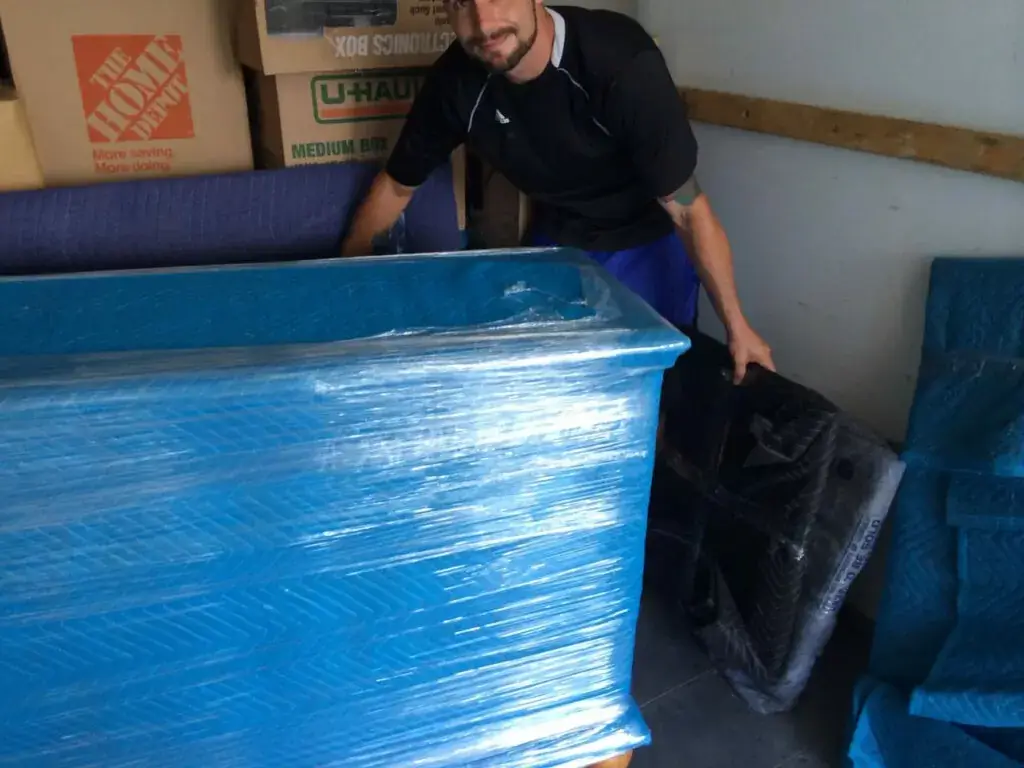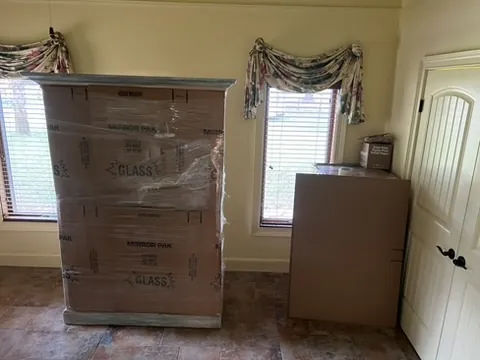When it comes to moving furniture, dressers can be tricky. If the drawers aren’t secured properly, they can slide open, get damaged, or even cause injury during transit. Whether you’re relocating across Ocala or heading out of state, taking time to secure your dresser drawers can make a big difference in the safety and efficiency of your move.
In this guide, the experts at Village Movers & Storage share proven techniques to keep your furniture protected, your belongings safe, and your move hassle-free.
Why It’s Important to Secure Dresser Drawers
Before diving into the how-to, here’s why securing dresser drawers is a must:
- Prevents Damage – Drawers that slide open can break or dent during the move.
- Protects Contents – Items inside drawers can spill, shift, or break if not secured.
- Improves Safety – Loose drawers can injure movers or become a tripping hazard.
- Simplifies Moving – A secured dresser is easier to handle and transport.
7 Effective Ways to Secure Dresser Drawers
1. Decide Whether to Keep Drawers In or Remove Them
Depending on the dresser’s weight, design, and how far you’re moving, you may choose to:
- Remove the drawers if the dresser is heavy, fragile, or has loose-fitting components.
- Leave the drawers in if the dresser is sturdy and it’s more efficient to keep them inside.
2. Wrap the Dresser in Plastic Stretch Wrap
Plastic wrap is one of the simplest and most effective ways to secure drawers.
How to Use It:
- Remove or secure items inside each drawer.
- Starting from the bottom, wrap tightly around the entire dresser.
- Cover the top, sides, and bottom to keep everything in place.
- Use high-quality stretch wrap to avoid tearing during transit.
3. Use Moving Blankets and Straps for Added Protection
Moving blankets offer dual benefits: they protect against scratches and help keep drawers in place.
Steps:
Drape a moving blanket over the dresser.
Use moving straps or bungee cords to secure the blanket.
Tighten straps enough to prevent drawer movement while keeping the dresser stable.
4. Apply Packing Tape (With Caution)
Packing tape is a quick solution when you’re in a pinch, but it must be used properly to avoid damaging the finish.
Tips:
Use strong, residue-free packing tape.
Tape horizontally across drawer fronts.
Avoid applying tape directly to wood or painted surfaces.
Pro Tip: Never use duct tape—it can leave behind sticky residue and damage furniture.
5. Wrap Individual Drawers with Shrink Wrap
If you decide to remove the drawers, consider wrapping them individually to prevent contents from spilling.
How-To:
Take out each drawer.
Wrap it securely in shrink wrap or plastic.
Add bubble wrap for delicate or antique drawer faces.
6. Use Drawer Locks or Childproof Latches (For Light, Local Moves Only)
While not designed specifically for moving, childproof latches can be a handy option for keeping dresser drawers shut during short, self-managed moves—especially when the drawers are empty or lightly packed.
Best for:
Local moves where you’re transporting items yourself.
Dressers with empty or minimal drawer contents.
Situations where you’ll be handling the furniture gently.
How to Use Them:
Attach a latch to each drawer.
Ensure the lock mechanism is secure before lifting or loading.
Remove after the move to reuse later if needed.
Note: Childproof locks aren’t built to withstand the bumps of a long-distance move or the weight of fully loaded drawers. For heavier loads or professional moves, stick with plastic wrap, straps, or moving blankets for more reliable protection.
7. Tie Drawers with Rope or Twine
For short-distance moves, rope or twine can be a fast and budget-friendly way to secure drawers.
Instructions:
Wrap rope securely around the dresser.
Tie tightly in the back or on the side.
Tilt slightly to ensure drawers stay shut.
Bonus Tips for a Hassle-Free Dresser Move
Empty or Secure Items Inside Drawers
To avoid damage:
Remove contents completely, or
Use drawer dividers or packing paper to secure items in place.
Label Drawers and Hardware
If removing drawers or disassembling the dresser:
Use labels or painter’s tape to mark where each drawer belongs.
Store screws and hardware in labeled bags.
Lift and Carry the Right Way
- Always lift from the base—not the top.
- Use furniture dollies when possible.
- Team-lift heavier pieces to prevent injury.
Common Mistakes to Avoid
Using the Wrong Tape: Avoid duct or masking tape that can damage surfaces.
Over-Wrapping: Too much plastic can trap moisture, which may harm wooden furniture.
Skipping Extra Padding: Especially for antiques or fragile dressers, extra protection is key.
Trust Village Movers & Storage for a Safe Move

Securing your dresser drawers is a small step that can make a big difference during your move. Whether you’re wrapping with plastic, using straps, or adding drawer locks, following the right techniques will help ensure everything arrives in great shape.
Need help moving your furniture safely and efficiently? Village Movers & Storage provides expert moving services in Ocala and beyond. Contact us today to schedule your move with a team that treats your belongings like their own.



